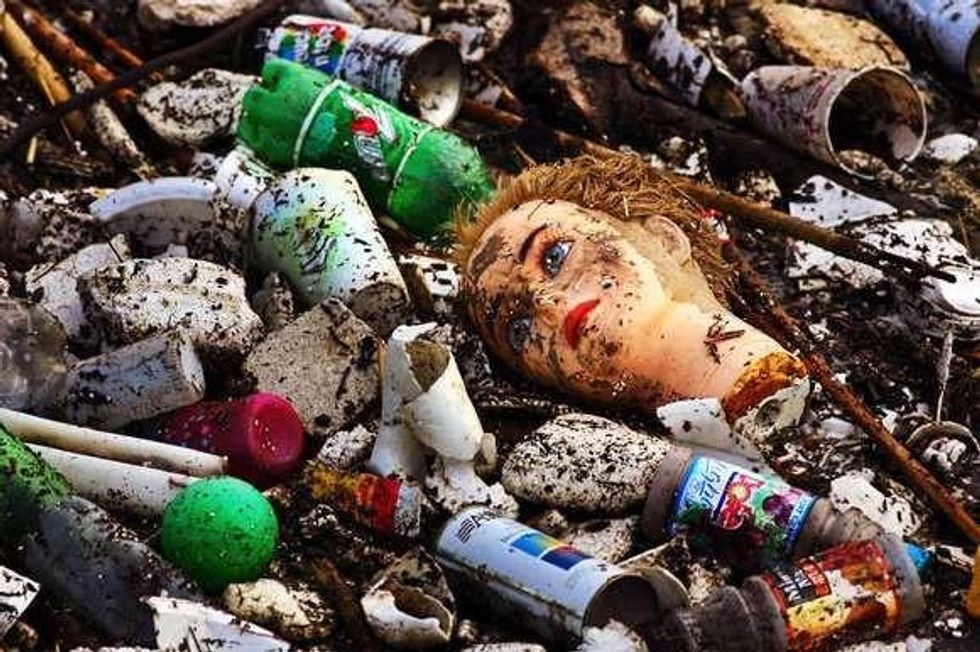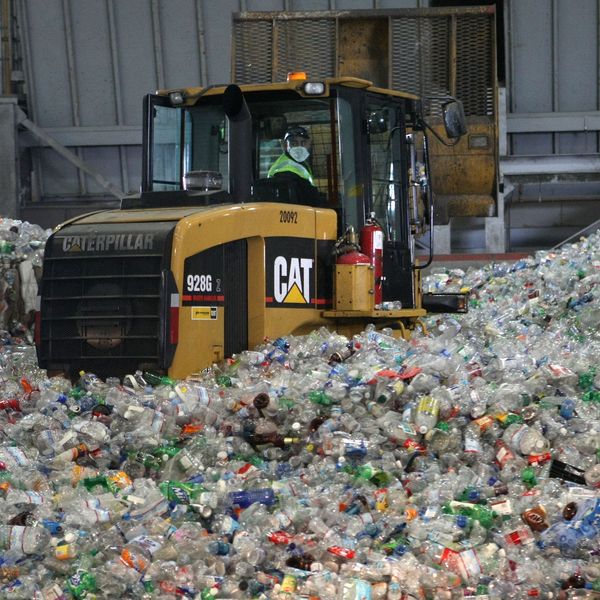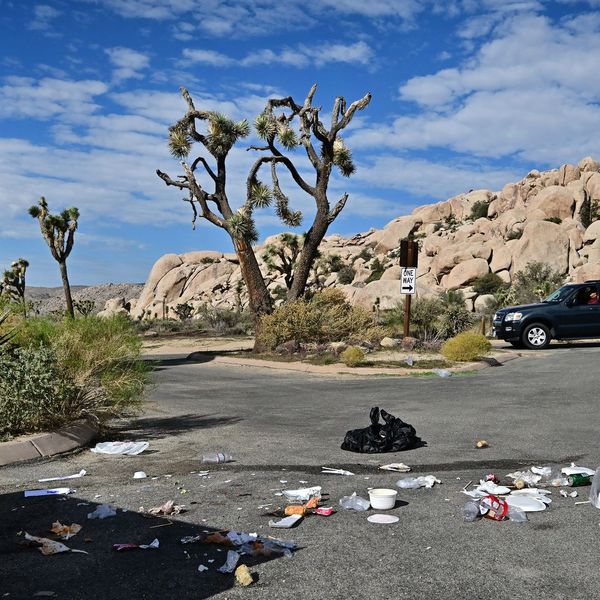Scientists: US Must Act Now Against 'Dangers' of Toxic Plastics
Group calls for reclassification of hazardous plastics

In a piece published Thursday in the journal Nature, the international group of scientists make that argument that by reclassifying the most harmful plastic waste as hazardous material--much like chlorofluorocarbons, or CFCs, were in 1989--environmental agencies will be better equipped to regulate the waste and research less destructive alternatives.
"The United States, Europe, Japan and other nations classified plastic as solid waste, treating their disposal much like food scraps or grass clippings," said report coauthor Mark Anthony Browne. "It's an outdated view that plastics are inert ignoring scientific evidence [...] that plastic debris is laden with highly toxic pollutants."
"We believe that if countries classified the most harmful plastics as hazardous, their environmental agencies would have the power to restore affected habitats and prevent more dangerous debris from accumulating," says the report.
The proposal initially targets four kinds of plastics composed of the most toxic materials: polyvinylchloride, or PVC, used in plastic pipes; polystyrene, or popularly known as Styrofoam; polyurethane; and polycarbonate, a hard plastic used in making baby bottles, electronics and appliances.
"We feel," the group writes, "that the physical dangers of plastic debris are well enough established, and the suggestions of chemical dangers sufficiently worrying, that the biggest producers of plastic waste--the United States, Europe and China--must act now."
An Urgent Message From Our Co-Founder
Dear Common Dreams reader, The U.S. is on a fast track to authoritarianism like nothing I've ever seen. Meanwhile, corporate news outlets are utterly capitulating to Trump, twisting their coverage to avoid drawing his ire while lining up to stuff cash in his pockets. That's why I believe that Common Dreams is doing the best and most consequential reporting that we've ever done. Our small but mighty team is a progressive reporting powerhouse, covering the news every day that the corporate media never will. Our mission has always been simple: To inform. To inspire. And to ignite change for the common good. Now here's the key piece that I want all our readers to understand: None of this would be possible without your financial support. That's not just some fundraising cliche. It's the absolute and literal truth. We don't accept corporate advertising and never will. We don't have a paywall because we don't think people should be blocked from critical news based on their ability to pay. Everything we do is funded by the donations of readers like you. Will you donate now to help power the nonprofit, independent reporting of Common Dreams? Thank you for being a vital member of our community. Together, we can keep independent journalism alive when it’s needed most. - Craig Brown, Co-founder |

In a piece published Thursday in the journal Nature, the international group of scientists make that argument that by reclassifying the most harmful plastic waste as hazardous material--much like chlorofluorocarbons, or CFCs, were in 1989--environmental agencies will be better equipped to regulate the waste and research less destructive alternatives.
"The United States, Europe, Japan and other nations classified plastic as solid waste, treating their disposal much like food scraps or grass clippings," said report coauthor Mark Anthony Browne. "It's an outdated view that plastics are inert ignoring scientific evidence [...] that plastic debris is laden with highly toxic pollutants."
"We believe that if countries classified the most harmful plastics as hazardous, their environmental agencies would have the power to restore affected habitats and prevent more dangerous debris from accumulating," says the report.
The proposal initially targets four kinds of plastics composed of the most toxic materials: polyvinylchloride, or PVC, used in plastic pipes; polystyrene, or popularly known as Styrofoam; polyurethane; and polycarbonate, a hard plastic used in making baby bottles, electronics and appliances.
"We feel," the group writes, "that the physical dangers of plastic debris are well enough established, and the suggestions of chemical dangers sufficiently worrying, that the biggest producers of plastic waste--the United States, Europe and China--must act now."

In a piece published Thursday in the journal Nature, the international group of scientists make that argument that by reclassifying the most harmful plastic waste as hazardous material--much like chlorofluorocarbons, or CFCs, were in 1989--environmental agencies will be better equipped to regulate the waste and research less destructive alternatives.
"The United States, Europe, Japan and other nations classified plastic as solid waste, treating their disposal much like food scraps or grass clippings," said report coauthor Mark Anthony Browne. "It's an outdated view that plastics are inert ignoring scientific evidence [...] that plastic debris is laden with highly toxic pollutants."
"We believe that if countries classified the most harmful plastics as hazardous, their environmental agencies would have the power to restore affected habitats and prevent more dangerous debris from accumulating," says the report.
The proposal initially targets four kinds of plastics composed of the most toxic materials: polyvinylchloride, or PVC, used in plastic pipes; polystyrene, or popularly known as Styrofoam; polyurethane; and polycarbonate, a hard plastic used in making baby bottles, electronics and appliances.
"We feel," the group writes, "that the physical dangers of plastic debris are well enough established, and the suggestions of chemical dangers sufficiently worrying, that the biggest producers of plastic waste--the United States, Europe and China--must act now."

